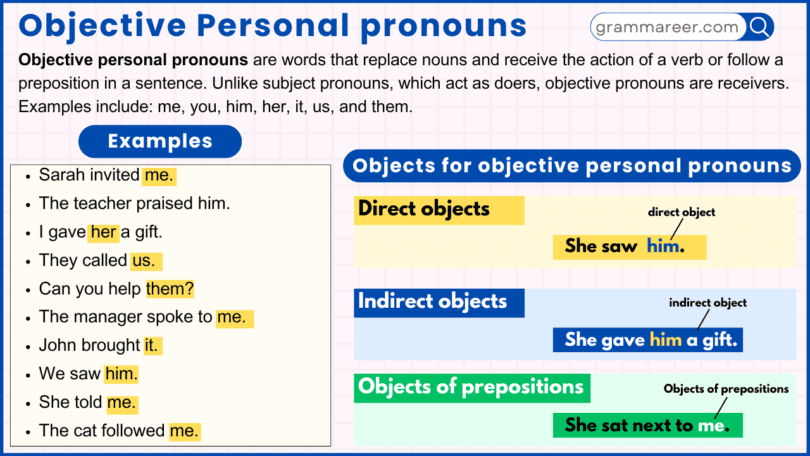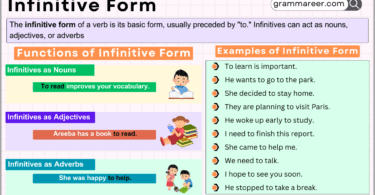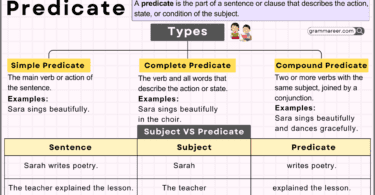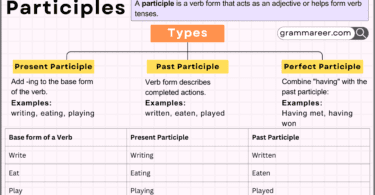Objective personal pronouns are fundamental tools in English, helping us construct sentences clearly and concisely. These pronouns act as objects in a sentence, serving as direct objects, indirect objects, or the objects of prepositions. This guide will explain their usage, types, and examples to make learning practical and engaging.
Objective personal pronouns are words that replace nouns and receive the action of a verb or follow a preposition in a sentence. Unlike subject pronouns, which act as doers, objective pronouns are receivers.
Examples:
Me, you, him, her, it, us and them.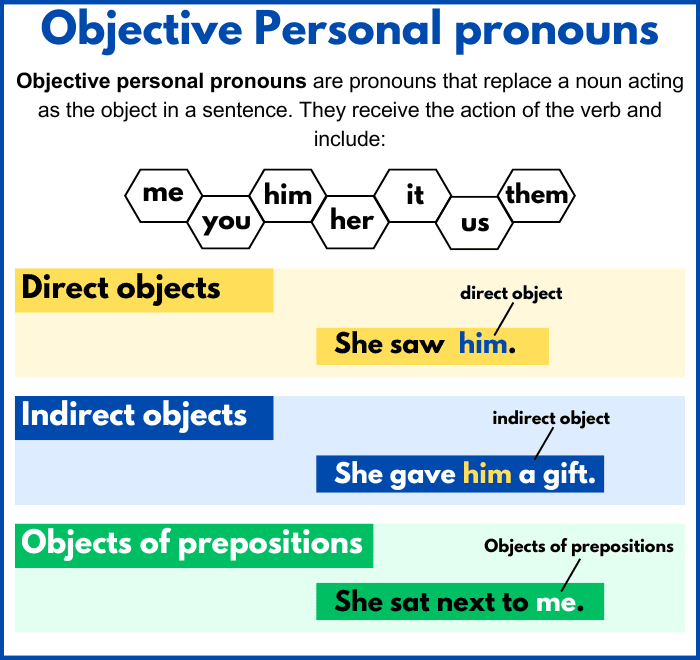
For example:
- Khadija handed the parcel to him.
Here, him is an objective personal pronoun that follows the preposition to.
Using these pronouns simplifies communication, eliminates repetition, and enhances sentence structure.
Table of Contents
Types of Objects for Objective Personal Pronouns
Objective personal pronouns can function as:
- Direct Objects
- Indirect Objects
- Objects of Prepositions
Examples of Objective Personal Pronouns as Direct Objects
A direct object answers the question whom or what after a verb. It is directly affected by the action. Examples:
✅ Hassan called me.
The verb called directly impacts me, making it the direct object.
✅ The teacher praised her for her hard work.
Here, her is the direct object of the verb praised.
✅ Omar invited them to dinner.
In this case, them is the direct object receiving the action invited.
Direct objects complete the meaning of a verb and are essential for grammatical clarity.
Examples of Objective Personal Pronouns as Indirect Objects
Indirect objects indicate to whom or for whom an action is performed, often accompanied by a direct object. Examples:
✅ Sarah gave me a pen.
The direct object is a pen, while me is the indirect object receiving it.
✅ She told him a secret.
The action told impacts a secret directly, while him benefits indirectly.
✅ We showed them the results.
In this sentence, them is the indirect object, and the results is the direct object.
Indirect objects make sentences richer by showing relationships between actions and recipients.
Examples of Objective Personal Pronouns as the Objects of Prepositions
When pronouns follow prepositions, they are called objects of prepositions. Examples:
✅ The flowers are for her.
The preposition for connects her to the subject of the sentence.
✅ They spoke with us about the project.
Here, with is the preposition, and us is the pronoun it governs.
✅ The cat jumped on him.
In this case, on links the pronoun him to the verb jumped.
Prepositions and their objects are vital for providing additional context and completing ideas.
Why Are Objective Personal Pronouns Important?
Objective personal pronouns play a significant role in English grammar. They are crucial because:
- They Clarify Meaning: Help identify who or what receives the action.
✅ Fatima scolded me.
❌ Fatima scolded I.
- They Prevent Repetition: Replace repetitive nouns, making communication smoother.
✅ Ahmed met them.
❌ Ahmed met Ahmed’s friends.
- They Enable Proper Sentence Flow: Correct placement ensures grammatical accuracy in written and spoken English.
Understanding and practicing their use will significantly enhance your communication skills.
FAQs
Subject pronouns perform actions, while object pronouns receive them.
example:
She (subject) called him (object).
Yes. Objective pronouns often follow prepositions, forming prepositional phrases.
Example:
The gift is for her.
To find the object, ask “whom?” or “what?” after the verb.
Yes. Depending on their placement, objective pronouns can function as both.
Example:
Direct: She praised him.
Indirect: She gave him a gift.
Conclusion
Objective personal pronouns are indispensable for clear and accurate sentence construction. They help convey relationships between subjects, verbs, and objects while maintaining grammatical consistency. By practicing their usage, you’ll enhance both your writing and speaking abilities in English.
You May Also Like

